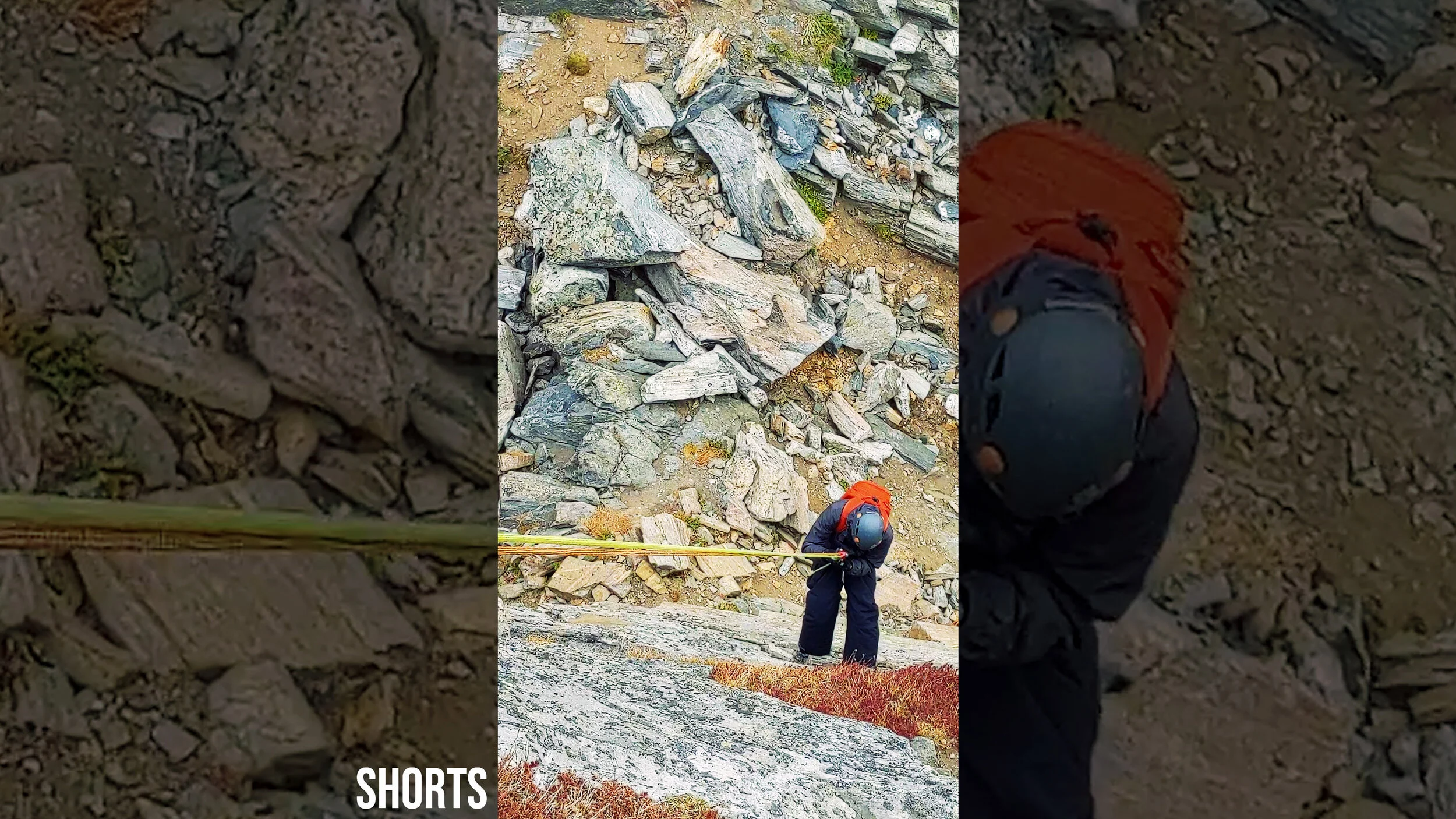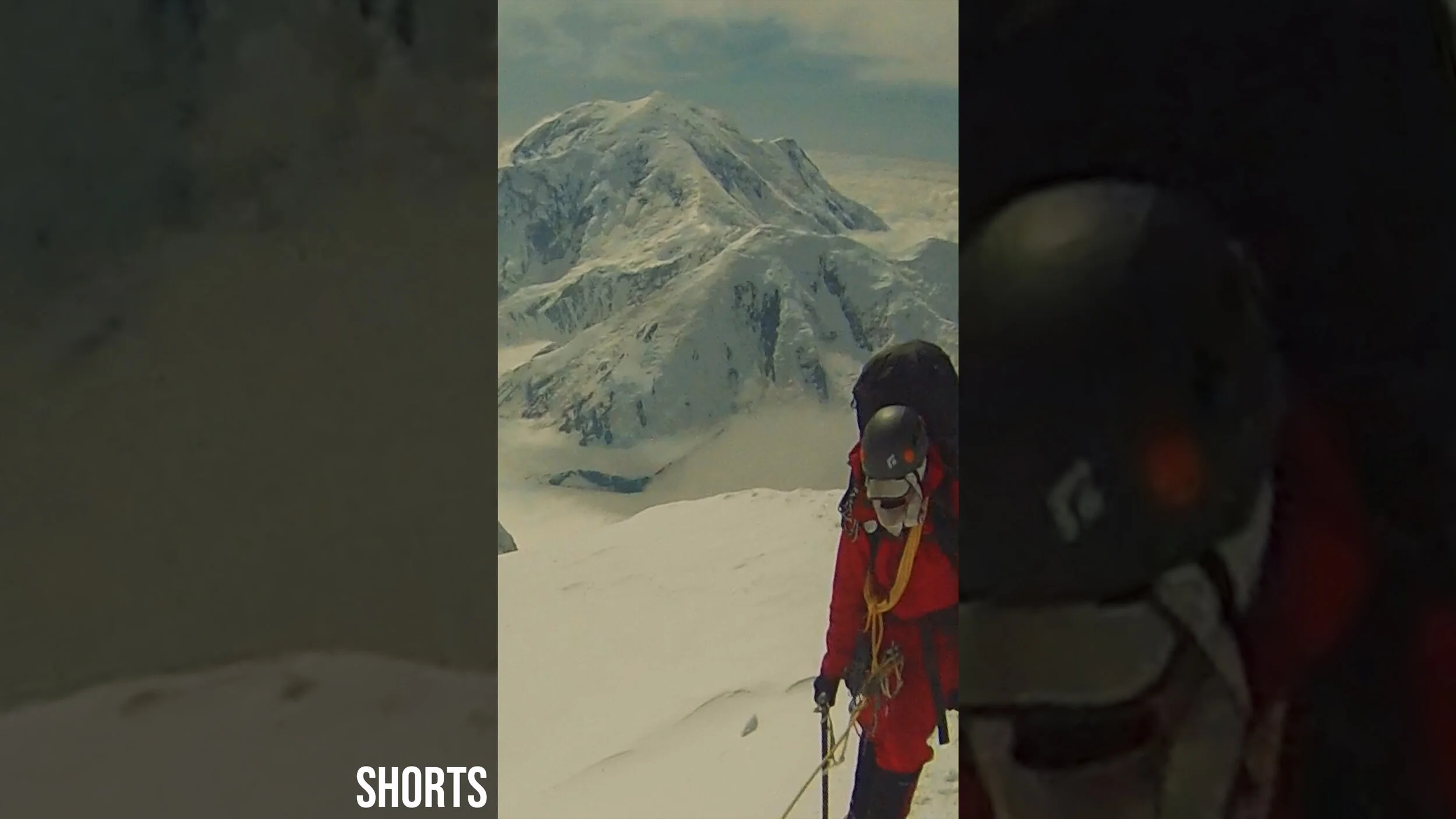Short clips
Trailers to full length videos and stand-alone quick tips; everything we make that is under 60 seconds
Trailer to Alpine Climbing Rack: Gear to Always Bring, Gear that is Route Dependent
When I take climbing partners new to the alpine up into the high routes, I often get asked if there is a "usual" set of gear to bring. There are a few items I always bring, but the gear for placement while lead climbing really does need to be specific to the route and conditions.
It's Winter in the Mountains! How to Sharpen Your Crampons
Snow and ice climbing season is here! Time to get that gear ready and we need to make sure it stays in top shape all season. This quick tip shows you how to file your crampons to get quality edges and points. Plus, a quick reminder on how not to sharpen them.
Trailer to Colorado's Mount Bancroft East Ridge Route Description
Mount Bancroft, one of the Colorado 13ers (13,250'), makes a very good introduction to technical alpine climbing. With both a one pitch rappel and one pitch class 5 climb along an enjoyable ridge scramble, it allows a climber who is new to alpine climbing to experience much of what makes moving technically in the alpine so much fun. I provided this experience for my nephew, recently. Besides recommending this route as a first (or first few) foray into alpinism, here's a route review so that climbers wanting to attempt this route can feel confident and informed as they plan their climbs
Why to Extend Your Belay Device Away from You When Rappelling (Abseiling)
For climbers, and particularly those who are alpine climbing or mountaineering, it has become much more common practice to "extend your rappel device" by leashing it to your harness and allowing it to extend up towards your head. In this video, we quickly cover some of the benefits of rappelling with an extended device, benefits which can add up to improve your safety margin while on rappel.
Fundamentals of Mountaineering and Snow Hiking: Improving Steps
For alpine climbing in winter and snow conditions, you can improve the safety and efficiency of your team by "improving your steps." That is, making sure that each climber on your team is using the same steps in the boot track in order to consolidate the snow and improve the stability of each foot placement.
Trailer to A Short Film of Nephew's First Technical Alpine Climb
I was there when my 8 year old nephew climbed his first 14er, and I was there again - 9 years later - when he did his first technical, class 5 climb on a classic alpine climbing route: Mount Bancroft's East Ridge. High winds and intermittent clouds made for a day demanding focus and confident movement.
Trailer to Why Our Kids Wear the Petzl Picchu Helmet for Climbing and Cycling
Climbing and cycling helmets are different. They are built to respond to different types of forces and have different safety standards. The Petzl Picchu helmet meets both sets of standards, giving your kids one helmet that can safely cover both activities.
Hiking Downhill Tip to Stop Slipping and Move Faster!
When hiking down hills or mountain sides, it's easy to slip and fall. And our natural reaction to those slips - to lean back and to shorten our steps - actually makes it even more likely that we slip more! Here's a body position and movement technique to make your footing more secure when moving downhill, whether mountaineering, climbing 14ers returning from a technical climb, going for a thru hike, backpacking, or trekking.
Trailer to A Short Film of Twin 6 Year Olds' First Summer Snow Climb
My twin boys are changing. They are growing up, gaining confidence, and improving their mountaineering skills. After a spring time working on ice axe techniques, the boys wanted to take on "a real snow climb." With feet too small for front-point crampons, we did a summer time climb of a permanent snowfield: the remnant of the glaciers that used to dominate the Rocky Mountains over ten thousand years ago. Like my boys, the mountains are changing, too.
Climbing and Hiking in Snow Means Protecting from Sun Overhead and Reflections from Below
With cold weather it's easy to forget the need for sun protection, and it's even easier to forget the need to protect yourself from not just the sun overhead but also the UV reflections from the snow, that strike you from below. Just a reminder to protect yourself given this dynamic.
Trailer to Duco Kids Polarized Sunglasses Review
Kids are more susceptible to the damage UV rays can cause. And while sunscreen and clothing are keys to protecting them, so are sunglasses. We had a hard time finding sunglasses that had quality lenses and were made of materials that would stand up to heavy hiking and climbing use. Then we found the Duco Kids Polarized Sunglasses. Here's a review of how they've been working for us after a year.
DIY Ice Axe Leash in 60 Seconds, Half the Price, Fall-Loads Rated
Store-bought ice axe leashes can be expensive. And their lack of fall-rated materials mean you can't safely use the leashes as part of an anchor set-up or as part of a rescue system, like for a crevasse fall. Here is a quick and easy alternative that costs you no more than the price of a triple-length runner and no more time than the time it takes to tie three knots.
Trailer to The Pros and Cons of Using Trekking Poles for Hiking and Alpine Climbing
Most hikers have strong opinions on trekking poles and their pros and cons. But like me, those opinions are primarily based on anecdotes and assumptions. Let’s go into what the scientific research has to say about how trekking poles help hikers and climbers and how they may be a hinderance. Will the research change your opinion one way or the other?
It's Almost Snow and Ice Season!! How to Sharpen Your Ice Axe
Snow and ice climbing season is fast approaching! Time to get that gear ready for use. This quick tip shows you how to file the pick of your ice axe (or ice tool) to get a quality edge and point. Plus, a quick reminder on how not to sharpen your axe.
Trailer to Full Video of 5 Tips for Those New to Class 3 and Class 4 Alpine Climbing
If you are wanting to move from class 1 and class 2 alpine hikes, like those found on many 14ers, and move on to class 3 and class 4 climbing, you may need to make some adjustments to your preparation, focus, equipment, and movement. This video walks you through 5 foundational tips for climbing 14ers, 13ers, and other alpine peaks.
Tired Hands? You Don't Have to Always Grip Your Trekking Poles
If you don't like trekking poles while hiking, that's fine. But if you don't like trekking poles because gripping them tires out your hands, then learn how to relax those hands when on mild terrain without ever losing control of your trekking poles.
Trailer to Full Video of a Mount Sherman Route Review for New 14ers Climbers
Are you wanting to hike to the summit of the Colorado14ers, and are you trying to choose which one to attempt first? Four members of my family have made Mount Sherman their first climb above 14,000 feet, and in the full version of this video we talk about the pros and cons of the drive and standard route as viewed through the lens of a new or new-ish 14er climber.
Hiking and 14er Tip: Your Snacks are the Key to Keeping On the Move Like a Mountaineer
Want to shorten your breaks while on the hike, climb, or a 14er summit attempt? Or do you just want to make sure that you eat several times a day so that you keep your energy from flagging? Well, keep your trail food at the ready, and you can do both more easily.
Trailer to Full Video on How to Acclimatize to Climb a14er
Wanting to know how to climb a 14er? Here is what to know and what to do for acclimatization. Your body needs to be able to adapt to receiving 43% of the oxygen per breath that you would get a sea level. You can apply these tips to better hydrate, climb, and schedule your pre-hike routine, tilting the odds of summit success in your favor.
Ice Cleats on Your Hike Can Help Year Round
Ice and snow traction for your feet, like the kind you can get with Kahtoola MICROspikes and High Stream Gear Ice Cleats for Kids, don't need to be a one season help. These can help you on steeper ground of compacted dirt and gravel. Try them out on your next Colorado 14er or 13er, or any hike with steeper slopes.



















